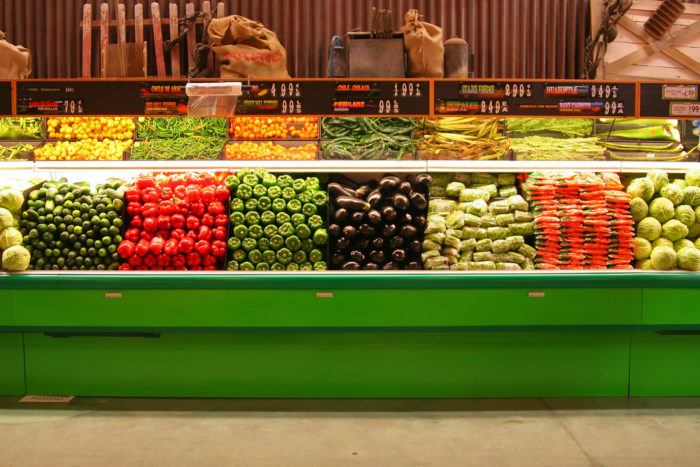The Food and Agriculture Organization of the United Nations (FAO) estimates that around 14 percent of food is lost worldwide in production or the supply chain before even reaching retailers. Recently, more attention is being paid to this issue. In 2018, the U.S. Department of Agriculture (USDA) and the Environmental Protection Agency (EPA) together announced an agreement to reduce food waste in the U.S. by 50 percent by the year 2030.
Government initiatives like this may have some impact on businesses’ efforts to reduce food loss in their supply chains, but cost is perhaps the biggest incentive. For businesses, the loss of food products before they reach retailers at the end of the supply chain is directly related to an increase in the total cost of business (TCOB). To protect their bottom lines, it is important for businesses to understand the factors causing food loss in the supply chain and then work toward addressing those problems.
Factors Causing Food Loss in the Supply Chain
Tracking down the causes of the food loss that occurs at various stages of the supply chain is complicated. Several factors are at play, including delayed orders that lead to excess inventory in warehouses, inefficient transportation legs, and even delayed distribution processes that can decrease the shelf life of food products. However, many of these problems come down to a few main areas that manufacturers and operations managers can focus on in order to create a more efficient supply chain that minimizes food waste:
- Packaging: The shelf life of food products can be increased significantly by improving the type of packaging used. For example, vacuum-packed meat products have less chance of being spoiled by contaminants. Cucumber wrapped in single-use plastics can retain moisture and last longer while moving through the supply chain. Grapes and potatoes have a longer in-store life when packed in aerated bags.
- Storage conditions: Maintaining the right storage conditions to preserve the freshness of perishable food items and to keep them safe for consumption is one of the primary challenges of food logistics management. Regulating temperatures in warehouses and during transportation and monitoring storage conditions to ensure proper hygiene can keep food products from spoiling before their expiration dates.
- Shipping pallets: Shipments containing food products often get damaged during transportation, storage, or handling. These damages are often caused by widely used wood pallets. Splinters or loose nails in damaged wood pallets can puncture product packaging, exposing food to external air and contaminants. Badly damaged pallets may even collapse completely during handling, spoiling the whole pallet load. Sometimes, wood pallets with visible staining or mold are rejected by the retailer, resulting in fees for the manufacturer and, often, the loss of the entire load.
Along with the factors above, operations managers should also take into account the possibility of human error, such as regulating warehouse temperature, spotting a damaged lot in a shipment, or identifying a damaged pallet. Yet, while the causes of food loss in the supply chain are complex, there are ways to reduce product losses by implementing some simple changes.
How to Reduce Food Loss in the Supply Chain
 A significant amount of food loss in the supply chain can be avoided by adopting new approaches related to monitoring and tracking warehouse conditions and shipments. Here are a few specific ways to do this:
A significant amount of food loss in the supply chain can be avoided by adopting new approaches related to monitoring and tracking warehouse conditions and shipments. Here are a few specific ways to do this:
- Temperature monitoring: Implementing cloud-based supply chain management (SCM) software can help avoid any mistakes related to regulating and monitoring temperature in warehouses. Human error in maintaining the temperature in cold storage warehouses can create risks leading to food loss. When integrated with temperature sensors, the right SCM software can monitor changes in temperature in warehouses and track the shelf life of stored products.
- Upgrading shipping pallets: Because wood pallets tend to break down during transportation and handling and cause product damage, plastic pallets are gaining popularity among warehouse and operations managers. Plastic pallets are sturdier than wood pallets and the absence of splinters or loose nails on plastic pallets removes much of the risk of product damage and food loss. Plastic pallets are also easier to track, as high-quality plastic platforms come with embedded RFID chips as well as barcodes that easily integrate with warehouse or supply chain management software.
- Inventory recordkeeping: When managing an inventory of perishable food products, the first-in-first-out (FIFO) or the first-expired-first-out approach (FEFO) for shipping pallets is often followed to minimize food loss. Warehouse employees must keep a record of dates that shipments arrive and depart along with expiration dates. A single mistake in this approach can spoil the entire load. By integrating SCM software with pallet-level tracking through barcodes or RFID tags, pallet loads can be easily logged in and out of the facility and the location of each pallet within the warehouse mapped.
Any snag in the food supply chain, whether due to human error or equipment failure, can cause major food loss in the supply chain, which adds up in costs over time. By implementing small, yet significant improvements in supply chain management such as switching to plastic pallets, managers can simultaneously address multiple issues related to food waste and can ensure their fresh food products arrive safely in the aisles of retail stores.
iGPS offers a pool of robust, high-quality plastic rental pallets that can help address several common problems that lead to food loss in the supply chain. For more information on how our pallet pooling program works, give our team a call at 1-800-884-0225, email a specialist at switch@igps.net, or visit our contact page.



